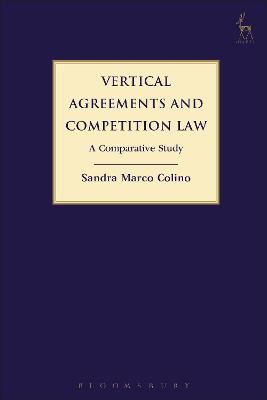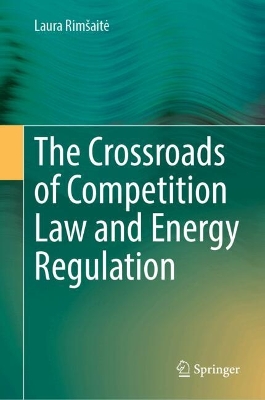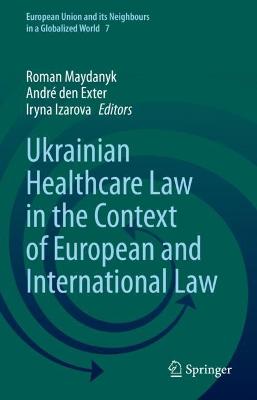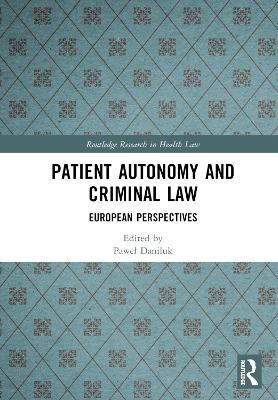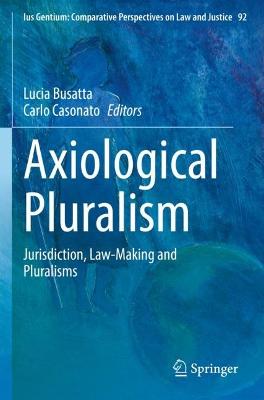Regulation, Innovation and Competition in Pharmaceutical Markets
 portes grátis
portes grátis
Regulation, Innovation and Competition in Pharmaceutical Markets
A Comparative Study
Colangelo, Margherita
Bloomsbury Publishing PLC
10/2024
256
Mole
Inglês
9781509965557
15 a 20 dias
Descrição não disponível.
Acknowledgements v
Introduction 1
I. The Different Faces of Pharmaceutical Markets 1
II. Purpose and Scope of the Analysis 3
III. Methodology 7
IV. Structure of the Book 9
PART I
1. Regulating Entry 15
I. The Main Features of Pharmaceutical Markets: The Supply Side and the Demand Side 15
II. The Product Life Cycle and the Costs of Innovation 20
III. The Access to the Market: Regulatory Approaches 23
A. The European Regulatory Framework 23
B. The US Regulatory Framework 27
IV. Concluding Remarks 33
2. Regulating Exclusivity 34
I. The Interplay between Regulatory Exclusivities and Intellectual Property Rights 34
II. Intellectual Property Rights in the Pharmaceutical Industry: An Overview on the Role of Patents 35
III. EU Supplementary Protection Certificate and US Patent Term Restoration 41
IV. Regulatory Exclusivity 48
V. Research and Bolar Exemptions 52
VI. Exhaustion Doctrine and Parallel Trade 59
VII. Concluding Remarks 63
3. Regulating Prices 64
I. Pharmaceutical Pricing and Reimbursement Systems in Europe 64
II. The US System 70
III. Concluding Remarks 76
viii Contents
PART II
4. Competition Law Enforcement in Pharmaceutical Markets: An Introduction 79
I. EU and US Antitrust Rules: An Essential Overview 79
II. Antitrust Enforcement in the Pharmaceutical Sector 87
III. Market Definition 95
IV. Concluding Remarks 100
5. Reverse Payment Patent Settlements 102
I. The Recurrence of Reverse Payment Patent Settlements in Pharmaceutical Markets 102
II. Reverse Payment Patent Settlements in the United States 105
A. Earlier Case Law and the Actavis Ruling 105
B. Critical Issues after Actavis 109
C. Further Developments 113
III. EU Case Law on Reverse Payment Patent Settlements 119
A. Lundbeck 120
B. Generics 123
IV. Comparative Analysis 127
A. Legal Frameworks 127
B. The Antitrust Assessment 129
V. Concluding Remarks 134
6. Product Hopping 136
I. Pharmaceutical Product Reformulations 136
II. Product Hopping before US Courts 140
III. The EU Experience 146
IV. The Antitrust Assessment of Product Reformulation 151
V. Concluding Remarks 155
7. Excessive Drug Pricing 157
I. The Resurgence of Excessive Pricing Cases in the Pharmaceutical Sector 157
II. Excessive Pricing under EU Competition Law 161
A. Aspen 165
III. The US Approach 169
IV. The Role of Antitrust Enforcement on Excessive Drug Prices 176
V. Concluding Remarks 178
Contents ix
PART III
8. Further Interactions: Pharmaceutical Markets, Intellectual Property and Human Rights 183
I. The Right to Health and Access to Medicines and the Relationship with Intellectual Property Rights: An Overview 183
II. Compulsory Licensing 191
III. Concluding Remarks 196
9. Public Health and Public Interest in Competition Law 198
I. Public Health and Competition Law 198
II. Competition Law and Non-competition Interests 203
III. Concluding Remarks 208
Conclusion 209
Bibliography 213
Index 233
Introduction 1
I. The Different Faces of Pharmaceutical Markets 1
II. Purpose and Scope of the Analysis 3
III. Methodology 7
IV. Structure of the Book 9
PART I
1. Regulating Entry 15
I. The Main Features of Pharmaceutical Markets: The Supply Side and the Demand Side 15
II. The Product Life Cycle and the Costs of Innovation 20
III. The Access to the Market: Regulatory Approaches 23
A. The European Regulatory Framework 23
B. The US Regulatory Framework 27
IV. Concluding Remarks 33
2. Regulating Exclusivity 34
I. The Interplay between Regulatory Exclusivities and Intellectual Property Rights 34
II. Intellectual Property Rights in the Pharmaceutical Industry: An Overview on the Role of Patents 35
III. EU Supplementary Protection Certificate and US Patent Term Restoration 41
IV. Regulatory Exclusivity 48
V. Research and Bolar Exemptions 52
VI. Exhaustion Doctrine and Parallel Trade 59
VII. Concluding Remarks 63
3. Regulating Prices 64
I. Pharmaceutical Pricing and Reimbursement Systems in Europe 64
II. The US System 70
III. Concluding Remarks 76
viii Contents
PART II
4. Competition Law Enforcement in Pharmaceutical Markets: An Introduction 79
I. EU and US Antitrust Rules: An Essential Overview 79
II. Antitrust Enforcement in the Pharmaceutical Sector 87
III. Market Definition 95
IV. Concluding Remarks 100
5. Reverse Payment Patent Settlements 102
I. The Recurrence of Reverse Payment Patent Settlements in Pharmaceutical Markets 102
II. Reverse Payment Patent Settlements in the United States 105
A. Earlier Case Law and the Actavis Ruling 105
B. Critical Issues after Actavis 109
C. Further Developments 113
III. EU Case Law on Reverse Payment Patent Settlements 119
A. Lundbeck 120
B. Generics 123
IV. Comparative Analysis 127
A. Legal Frameworks 127
B. The Antitrust Assessment 129
V. Concluding Remarks 134
6. Product Hopping 136
I. Pharmaceutical Product Reformulations 136
II. Product Hopping before US Courts 140
III. The EU Experience 146
IV. The Antitrust Assessment of Product Reformulation 151
V. Concluding Remarks 155
7. Excessive Drug Pricing 157
I. The Resurgence of Excessive Pricing Cases in the Pharmaceutical Sector 157
II. Excessive Pricing under EU Competition Law 161
A. Aspen 165
III. The US Approach 169
IV. The Role of Antitrust Enforcement on Excessive Drug Prices 176
V. Concluding Remarks 178
Contents ix
PART III
8. Further Interactions: Pharmaceutical Markets, Intellectual Property and Human Rights 183
I. The Right to Health and Access to Medicines and the Relationship with Intellectual Property Rights: An Overview 183
II. Compulsory Licensing 191
III. Concluding Remarks 196
9. Public Health and Public Interest in Competition Law 198
I. Public Health and Competition Law 198
II. Competition Law and Non-competition Interests 203
III. Concluding Remarks 208
Conclusion 209
Bibliography 213
Index 233
Este título pertence ao(s) assunto(s) indicados(s). Para ver outros títulos clique no assunto desejado.
Acknowledgements v
Introduction 1
I. The Different Faces of Pharmaceutical Markets 1
II. Purpose and Scope of the Analysis 3
III. Methodology 7
IV. Structure of the Book 9
PART I
1. Regulating Entry 15
I. The Main Features of Pharmaceutical Markets: The Supply Side and the Demand Side 15
II. The Product Life Cycle and the Costs of Innovation 20
III. The Access to the Market: Regulatory Approaches 23
A. The European Regulatory Framework 23
B. The US Regulatory Framework 27
IV. Concluding Remarks 33
2. Regulating Exclusivity 34
I. The Interplay between Regulatory Exclusivities and Intellectual Property Rights 34
II. Intellectual Property Rights in the Pharmaceutical Industry: An Overview on the Role of Patents 35
III. EU Supplementary Protection Certificate and US Patent Term Restoration 41
IV. Regulatory Exclusivity 48
V. Research and Bolar Exemptions 52
VI. Exhaustion Doctrine and Parallel Trade 59
VII. Concluding Remarks 63
3. Regulating Prices 64
I. Pharmaceutical Pricing and Reimbursement Systems in Europe 64
II. The US System 70
III. Concluding Remarks 76
viii Contents
PART II
4. Competition Law Enforcement in Pharmaceutical Markets: An Introduction 79
I. EU and US Antitrust Rules: An Essential Overview 79
II. Antitrust Enforcement in the Pharmaceutical Sector 87
III. Market Definition 95
IV. Concluding Remarks 100
5. Reverse Payment Patent Settlements 102
I. The Recurrence of Reverse Payment Patent Settlements in Pharmaceutical Markets 102
II. Reverse Payment Patent Settlements in the United States 105
A. Earlier Case Law and the Actavis Ruling 105
B. Critical Issues after Actavis 109
C. Further Developments 113
III. EU Case Law on Reverse Payment Patent Settlements 119
A. Lundbeck 120
B. Generics 123
IV. Comparative Analysis 127
A. Legal Frameworks 127
B. The Antitrust Assessment 129
V. Concluding Remarks 134
6. Product Hopping 136
I. Pharmaceutical Product Reformulations 136
II. Product Hopping before US Courts 140
III. The EU Experience 146
IV. The Antitrust Assessment of Product Reformulation 151
V. Concluding Remarks 155
7. Excessive Drug Pricing 157
I. The Resurgence of Excessive Pricing Cases in the Pharmaceutical Sector 157
II. Excessive Pricing under EU Competition Law 161
A. Aspen 165
III. The US Approach 169
IV. The Role of Antitrust Enforcement on Excessive Drug Prices 176
V. Concluding Remarks 178
Contents ix
PART III
8. Further Interactions: Pharmaceutical Markets, Intellectual Property and Human Rights 183
I. The Right to Health and Access to Medicines and the Relationship with Intellectual Property Rights: An Overview 183
II. Compulsory Licensing 191
III. Concluding Remarks 196
9. Public Health and Public Interest in Competition Law 198
I. Public Health and Competition Law 198
II. Competition Law and Non-competition Interests 203
III. Concluding Remarks 208
Conclusion 209
Bibliography 213
Index 233
Introduction 1
I. The Different Faces of Pharmaceutical Markets 1
II. Purpose and Scope of the Analysis 3
III. Methodology 7
IV. Structure of the Book 9
PART I
1. Regulating Entry 15
I. The Main Features of Pharmaceutical Markets: The Supply Side and the Demand Side 15
II. The Product Life Cycle and the Costs of Innovation 20
III. The Access to the Market: Regulatory Approaches 23
A. The European Regulatory Framework 23
B. The US Regulatory Framework 27
IV. Concluding Remarks 33
2. Regulating Exclusivity 34
I. The Interplay between Regulatory Exclusivities and Intellectual Property Rights 34
II. Intellectual Property Rights in the Pharmaceutical Industry: An Overview on the Role of Patents 35
III. EU Supplementary Protection Certificate and US Patent Term Restoration 41
IV. Regulatory Exclusivity 48
V. Research and Bolar Exemptions 52
VI. Exhaustion Doctrine and Parallel Trade 59
VII. Concluding Remarks 63
3. Regulating Prices 64
I. Pharmaceutical Pricing and Reimbursement Systems in Europe 64
II. The US System 70
III. Concluding Remarks 76
viii Contents
PART II
4. Competition Law Enforcement in Pharmaceutical Markets: An Introduction 79
I. EU and US Antitrust Rules: An Essential Overview 79
II. Antitrust Enforcement in the Pharmaceutical Sector 87
III. Market Definition 95
IV. Concluding Remarks 100
5. Reverse Payment Patent Settlements 102
I. The Recurrence of Reverse Payment Patent Settlements in Pharmaceutical Markets 102
II. Reverse Payment Patent Settlements in the United States 105
A. Earlier Case Law and the Actavis Ruling 105
B. Critical Issues after Actavis 109
C. Further Developments 113
III. EU Case Law on Reverse Payment Patent Settlements 119
A. Lundbeck 120
B. Generics 123
IV. Comparative Analysis 127
A. Legal Frameworks 127
B. The Antitrust Assessment 129
V. Concluding Remarks 134
6. Product Hopping 136
I. Pharmaceutical Product Reformulations 136
II. Product Hopping before US Courts 140
III. The EU Experience 146
IV. The Antitrust Assessment of Product Reformulation 151
V. Concluding Remarks 155
7. Excessive Drug Pricing 157
I. The Resurgence of Excessive Pricing Cases in the Pharmaceutical Sector 157
II. Excessive Pricing under EU Competition Law 161
A. Aspen 165
III. The US Approach 169
IV. The Role of Antitrust Enforcement on Excessive Drug Prices 176
V. Concluding Remarks 178
Contents ix
PART III
8. Further Interactions: Pharmaceutical Markets, Intellectual Property and Human Rights 183
I. The Right to Health and Access to Medicines and the Relationship with Intellectual Property Rights: An Overview 183
II. Compulsory Licensing 191
III. Concluding Remarks 196
9. Public Health and Public Interest in Competition Law 198
I. Public Health and Competition Law 198
II. Competition Law and Non-competition Interests 203
III. Concluding Remarks 208
Conclusion 209
Bibliography 213
Index 233
Este título pertence ao(s) assunto(s) indicados(s). Para ver outros títulos clique no assunto desejado.

